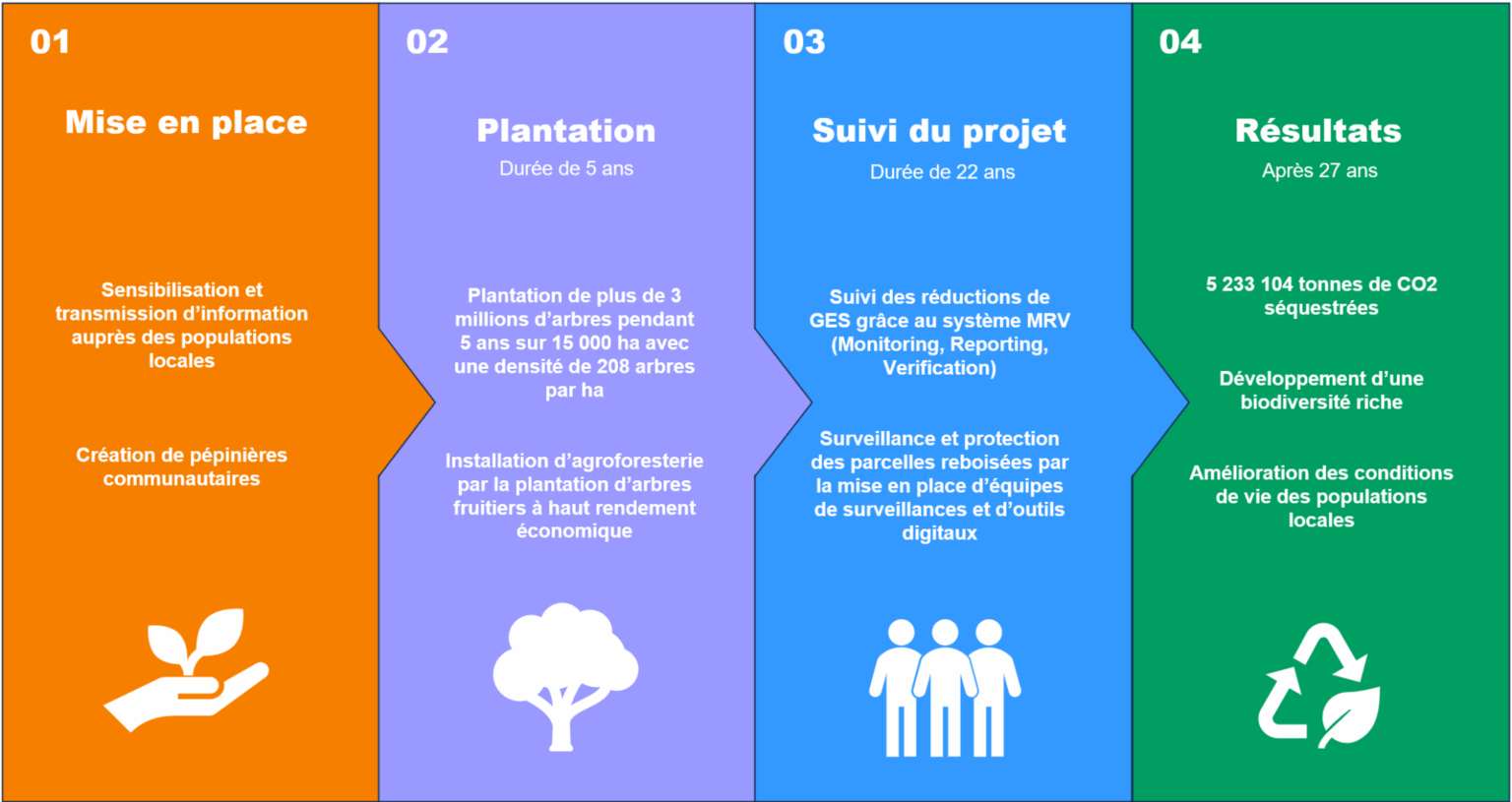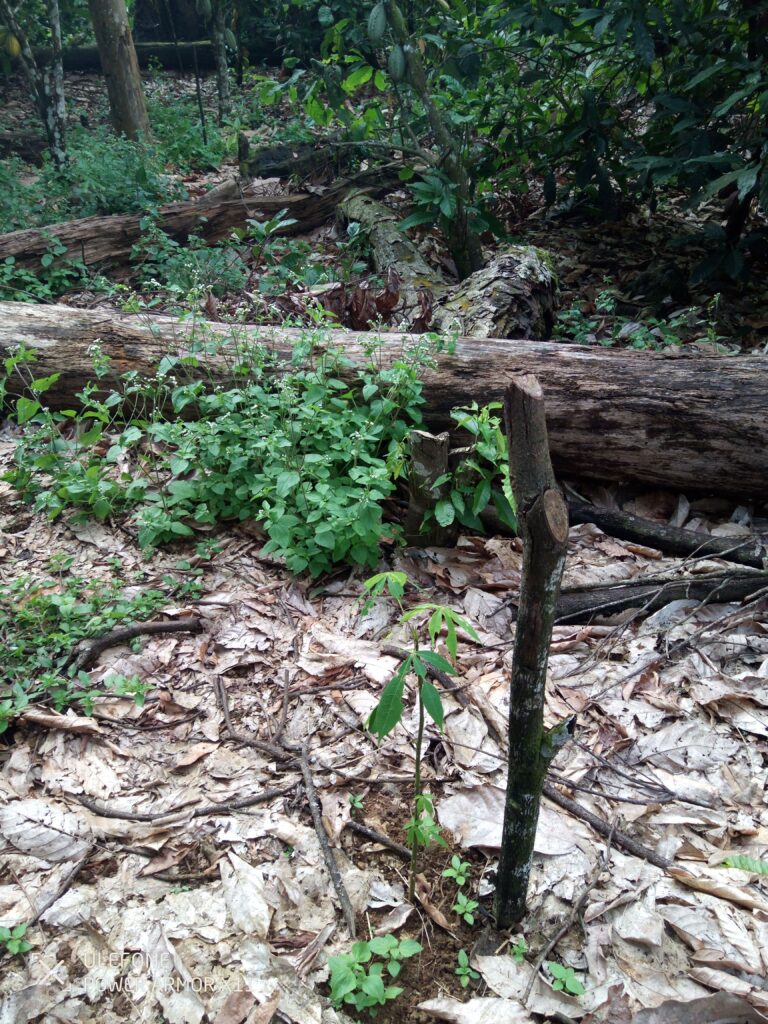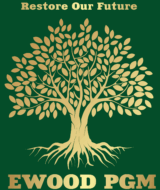
EWOOD-PGM participates in the fight against climate change and deforestation. It is involved in reforestation and forest conservation projects through the voluntary carbon credit market.
EWOOD-PGM and the State of Côte d’Ivoire have agreed on two forest concession agreements for a period of 50 years with the possibility of renewal, namely:
– The Tiapleu forest of 28,000 ha.
This project is planned over a period of 27 years, from 2024 to 2051.
In recent decades, the classified Tiapleu forest has lost 85% of its vegetation cover. The carbon credit project will provide afforestation of 15,000 hectares in these areas, and it will help restore their wildlife and flora.

The Carbon 2024 project is part of Côte d’Ivoire’s new forest policy for the Preservation, Rehabilitation, and Expansion of Forests. The main objectives of this strategy are:
- Improving forest governance
- Strengthening the protection of remaining forest areas, expanding them, and managing them sustainably
- The restoration of degraded forest areas and adaptation to climate change.

Project timeline over 27 years:

On the social level, the carbon project is based on the principle of free consent from local populations. They are informed beforehand, and some of them receive training in good agricultural practices. This will help create numerous jobs. More specifically, this project represents an investment of 50 million euros over 27 years. The expertise passed on to local communities through this project will generate many future jobs, such as forest rangers, planters, weeders… This will result in the long-term development of the populations in these regions. Thanks to Thanry's experience in reforestation since its inception, raising awareness and sharing information with local populations are facilitated and optimized.The main challenge of this project is to involve local populations and farmers in the best possible way. Specifically, we will implement financial and non-financial incentive mechanisms to encourage local communities to protect and maintain the plantations carried out. Compensation is planned for farmers who would no longer be able to cultivate the areas dedicated to afforestation. At the same time, community nurseries will be set up to prepare tree seedlings intended to be planted. Finally, a dual objective will be achieved through agroforestry. This sustainable agricultural practice will allow for the combination of reforestation and agricultural cultivation on the same plots by introducing high-yield fruit trees such as cocoa, avocado, orange, lemon, and kola trees. This will result in improved soil productivity while protecting the environment and promoting biodiversity. Existing plantations will be enhanced through this system. They will enable close and mutually beneficial collaboration with local populations. From an environmental perspective
Approved standards
The VCS (Verified Carbon Standard), also called VERRA, is used for certifying carbon emission reductions. The standard is the most widely used international offset standard in the world. In fact, this standard is mainly based on three pillars.
01
Transparency
Whether it is about the origin of the harvested wood, the origin of derived products, social and environmental impacts such as greenhouse gases emitted and sequestered, as well as their calculation methods. Clear, precise, and accurate documents must be communicated to stakeholders.
02
Credibility
The VCS standard requires and ensures that regulations are followed and validated by independent third parties responsible for emissions calculations and project verification reports. This pillar helps establish trust in the VCS.
03
Environmental impact
Projects approved by the VCS must have a tangible and active effect on reducing greenhouse gas emissions and comply with social and environmental standards.
The validation process according to the VCS 4.4 standard involves evaluating the assumptions and methods used in project development through an external audit. After the audit, a validation report is issued to confirm that the project design complies with the standard’s guidelines, including the method used for quantifying emissions.

The verification, carried out by an external auditor, involves assessing the accuracy and compliance of historical data and information related to our intervention. The auditor conducts a review of the monitoring report issued by our company, an on-site visit, and an audit. A report is then provided by the auditors with recommendations to improve the intervention and also to indicate the amount of carbon that can be claimed. Verifications must be carried out every 5 years. The Thanry project team is required to produce quarterly reports during the planting implementation period (the first 5 years) and annual reports for the remainder of the project. The reports contain information on:
- The planted species;
- The planted hectares;
- The success rate of reforestation
- The sample size of monitored trees
- sequestered; The number of tons of CO2
- People employed/trained (by gender);
- The number of seedlings provided by community nurseries.
The MRV system, reliable and accurate monitoring of greenhouse gas reductions
The MRV system is a key component of the 2015 Paris Climate Agreement, which was adopted by 196 countries with the aim of limiting global warming to below 2°C compared to pre-industrial levels. It is based on international standards and guidelines for measuring GHG emissions. It also includes processes that ensure the transparency, reliability, and comparability of emissions data.
In order to identify reductions in greenhouse gases (GHGs), the company’s carbon credit project implements a reliable monitoring system to track the project’s progress based on the MRV (Monitoring, Reporting, Verification) protocol. This will enable the establishment of a monitoring plan, a control mechanism, and data validation. Using this system will allow us to track the evolution of both carbon and non-carbon indicators of the ongoing project.
The group is committed to providing reliable data within the framework of
Le groupe s’engage à fournir des données fiables dans le cadre du déploiement du système MRV grâce à notre plan de suivi. Lequel est élaboré conformément aux orientations du standard VCS. Le projet pourra également solliciter l’utilisation de l’outil LandScale développé par Rainforest Alliance.From the deployment of the MRV system thanks to our monitoring plan, which is developed in accordance with the guidelines of the VCS standard. The project may also request the use of the LandScale tool developed by Rainforest Alliance.
A supervised and secure project
We refer to the MRV system for monitoring through two channels:
Monitoring teams equipped with all the necessary logistics to carry out forest cover monitoring optimally.
The use of digital tools such as Forest Watcher, Lens, and Landscale will alert us to areas of deforestation and bushfires, allowing the Thanry teams to intervene as early as possible.

